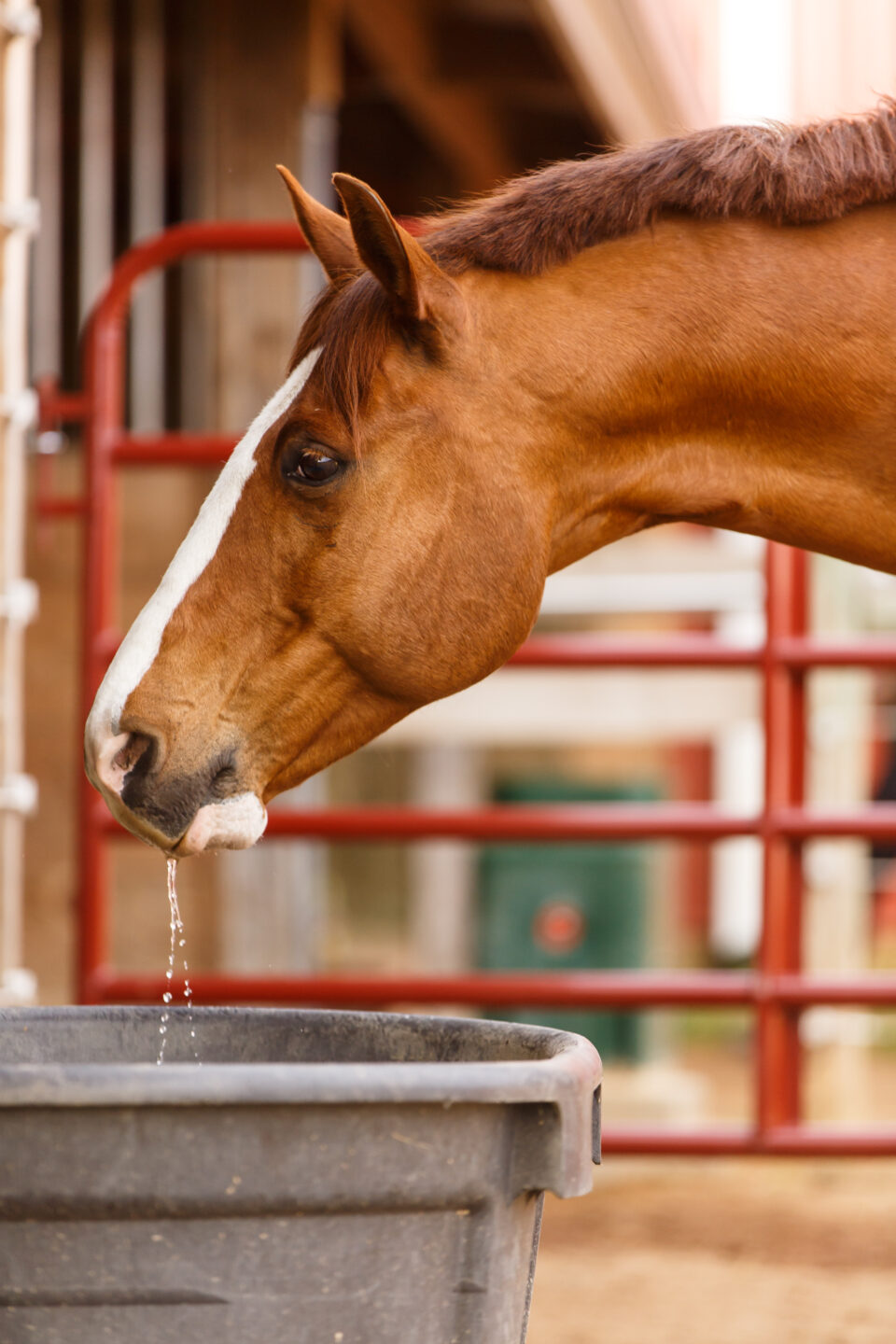Hazard of Blue-Green Algae In Drinking Water For Horses:

Current weather and water conditions in many parts of the country have created conditions favorable for the rapid growth of Blue-Green Algae. Blue-Green Algae in water can be a hazard to horses
Understanding Blue-Green Algae
These primitive organisms are actually algae-like bacteria instead of being true algae and are also referred to as Cyanobacteria. They grow rapidly and may produce the pea-soup green color in some bodies of water, along with some foul odors.
These rapid growth periods, called “blooms”, most frequently occur when there is a combination of warm weather, intermittent or limited rainfall and an accumulation of nutrients, particularly phosphorus and nitrogen.
Identifying Toxic Blue-Green Algae: Planktonic vs. Mat-Forming Species
The planktonic groups produce the pea green water while the mat-forming groups produce dark mats that start on the bottom and float to the surface. The planktonic species (Anabena, Aphanizomenon and Microcystis) are believed to be most likely to produce toxins which can be harmful or fatal to animals when ingested. (Fact Sheet on Toxic Blue-Green Algae, Purdue University, Carole A. Lembi)
The blooms of Cyanobacteria tend to accumulate on the downwind side of pond and may look like swirls of green paint. The toxins may be ingested when animals drink the water or when they lick their coats after being in the water.
Health Risks to Horses: Ingestion of Toxins from Blue-Green Algae
Animals are more likely to consume the water if fresh water supplies are limited from other sources. Any animals that drink the water during a period when toxins are being produced may be affected, but toxins are not always produced when there is a bloom.
Importance of Clean Drinking Water: Preventing Animals from Consuming Contaminated Water
Providing fresh, clean, safe drinking water is the best way to avoid causing animals to consume questionable water. If pets go swimming, they should be cleaned off before they have a chance to lick their coats.
Symptoms of Toxicity
Toxic symptoms may include vomiting, diarrhea, rash and skin irritation. There are generally two types of toxins. Neurotoxins that affect the central nervous system and hepatotoxins which affect the liver function.
Preventing Blue-Green Algae In Water
Preventing run-off of nutrients into ponds and lakes is also important to help reduce the risk of these algae blooms. Droughts increase nutrient concentration in water, exacerbating the risk of algae blooms in ponds and lakes..
While not all “blooms” may produce toxins, avoiding exposure to or consumption of suspect water is recommended. More information is available from local and state pollution control sites or extension sites.
There is a useful article in Feedstuffs, June 15, 2018 by Dr. A.J. Tarpoff that describes issues and recommends testing procedure if you think that you might have an issue. Extension Specialists may also have local information and may be able to direct you to testing options in your state.
Ready to ensure your horse is getting the optimum nutrition at feeding time, every time? Find the perfect feed formulated specifically for horse’s needs with our Feed Selector Tool.
